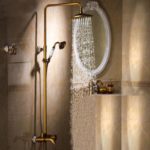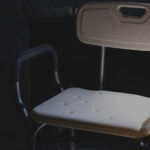We are fortunate to live in a time where having a consistent water supply to maintain proper hygiene is a necessity instead of a luxury. Hot or cold water is made available by simply turning the faucet on, and modern showerheads even have various spray settings for maximum relaxation. But has it always been this way? Taking a shower has become a regular routine that it’s quite difficult to imagine what life could be without the luxury of showers we’re enjoying today. Let’s take a look back at how showers have evolved and find out how these contributed to the invention of the shower that we know it.
Before showers
To keep themselves clean, our ancestors made use of a natural form of shower that became the inspiration of modern showers: waterfall. They recognized that it’s easier to wash the body with free-falling water compared to the calmer waters of lakes and rivers. Waterfalls also provide a continuous stream of fresh drinking water, that’s why it shouldn’t come as a surprise why communities are commonly found near one.
Taking a shower during the ancient times
In Ancient Egypt, people used jugs to collect water, and the rich used their servants to fetch water in jugs and use it to clean their masters in private shower areas. Showering consumed less water, which means the servants only need to fetch a certain amount of water to clean their masters instead of filling a huge luxurious tub with water to bathe their masters.
Ancient Greeks used a complex water system made possible by aqueducts and sewers. Water was available for both the nobility and the commoners. Communal showers and bathhouses were also accessible by everyone, and was a place for socialization aside from taking a shower.
Ancient Rome also made use of bathhouses and had a supply of heated water via log fires. Romans were encouraged to use the bathhouses multiple times in a week, sometimes a number of times a day. Just like the Ancient Greeks, bathhouses were also utilized for socialization.
First “modern” shower
It wasn’t until 1767 when the first mechanical shower was invented by William Feetham. To release the water from the container, a user pulls a chain connected attached to a hand pump. It became the inspiration of the various iterations in the early 1800s such as the Regency Era shower, which became popular among the wealthy because of its ability to add hot water directly to the mechanism. Indoor plumbing in the mid-1800s also made it possible to use fresh running water inside the house instead of recycling water. Modern showers were installed in prisons, bathhouses and even schools after people saw how efficient showering is as an alternative to taking a bath.
Today’s showers
Technological advancements have made it possible to add a lot of features to showers that drastically improved our bathing experience. Present-day showers have a lot of impressive features such as a massaging spray feature, filters infused with vitamins, waterproof sound system, multicolored LED mood lighting, and even a digital interface! We’ve definitely come a long way from taking a shower in a waterfall, and who knows what other innovations will be added to showers in the future?























